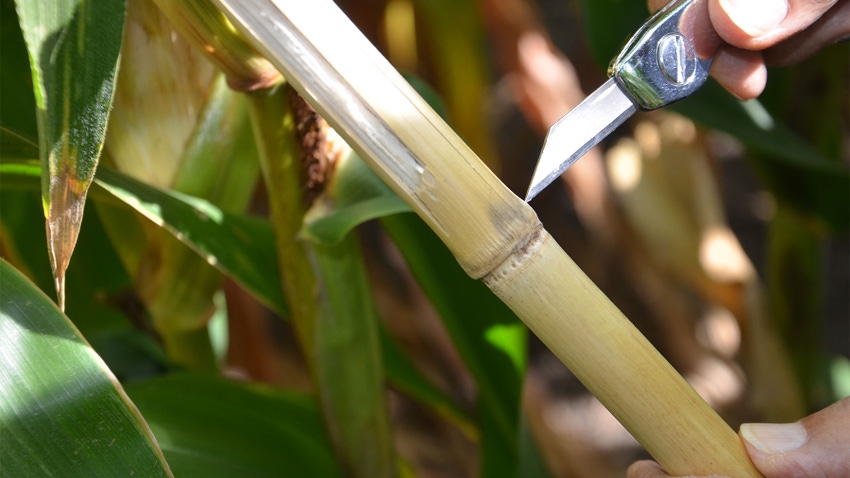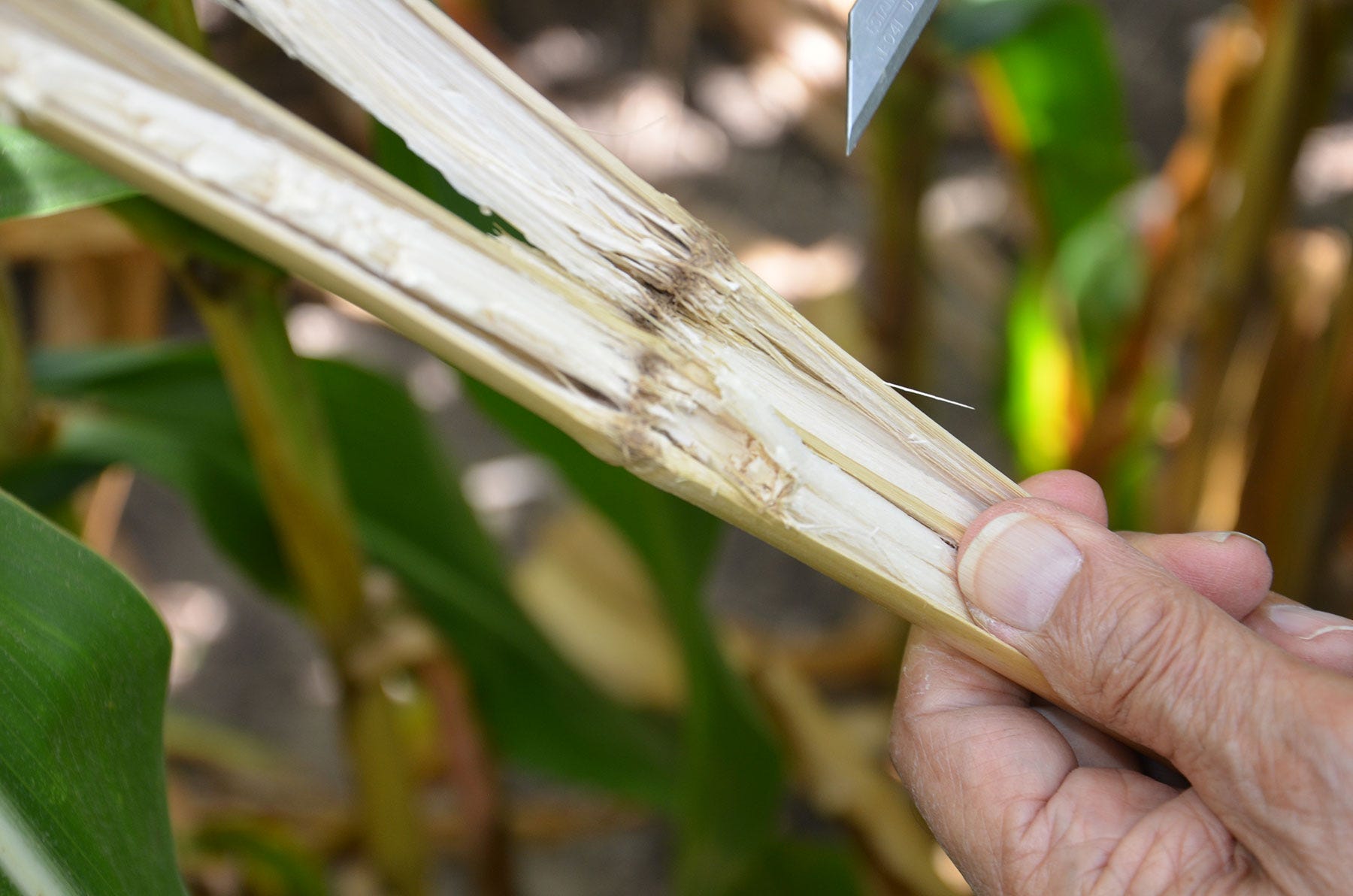
Late-season scouting in cornfields before harvest includes looking for stalk rot. The easiest indicator is to do one of two different tests in the field. Either push stalks to the side and count how many do not snap back crisply, or pinch stalks and see if any are soft vs. hard and firm.
“I recommend doing either the push test or the pinch test on 100 stalks in a row,” says Dave Nanda, director of genetics for Seed Genetics Direct, sponsor of Corn Watch ’23. “Then repeat it on other rows and in other areas of the field. Once you do several different counts, you can determine an average percentage of plants with problems.”
The practical application of doing these tests is to determine if the field could stand later into the season, or if early harvest of that field should be a priority, Nanda says. “If you’re seeing a significant number of stalks ready to lodge early in the fall, mark it for early harvest,” he explains. “Otherwise, stalk lodging could lead to higher field losses when you shell the field.”
Closer look at cornstalks
What you’re determining with the push test or pinch test is how many stalks have already succumbed to stalk rot, or how many are infected and in the early stages of the disease.
“I like to go beyond just knowing how big the problem is, and determine which pathogen is causing it,” Nanda notes. “One of the most common stalk rots in the Midwest is anthracnose. There is also a leaf blight phase, but the stalk rot phase is often most troublesome. Diplodia and fusarium are other common stalk rots.”
Stress of any kind during the growing season helps set plants up for stalk rot. It’s still unclear whether the early-season drought that stressed plants will lead to repercussions this fall. Regardless, it pays to be looking for stalk rots every year, Nanda says.

SLICE AND SEE: The next step after observing black discoloration on the outside of the stalk is to look inside. Dave Nanda split this stalk open to look at the nodes. This node is exhibiting brown discoloration.
Once you identify stalks that don’t rebound in the push test or that are soft in the pinch test, examine them more closely, Nanda says. Anthracnose stalk rot will turn the outside of stalks black, at least in spots. Diplodia can cause discoloration on the outside of the stalk too, usually near a node.
“Cut some stalks open,” Nanda recommends. “A pocketknife is a good scouting tool to keep handy. Split the stalk lengthwise down the middle and look inside.”
Discoloration often happens at the node inside the stem, he says. As the infection worsens, the entire pith can become discolored, depending upon the disease. If you find pinkish, reddish discoloration of pith tissue, it’s more likely caused by the fusarium pathogen, he explains.
“It helps to know which pathogens were in the field and causing issues,” Nanda concludes. “Keep that in mind as you evaluate hybrids for next season. See how resistant different hybrids are to stalk rots.”
Read more about:
ScoutingAbout the Author(s)
You May Also Like




